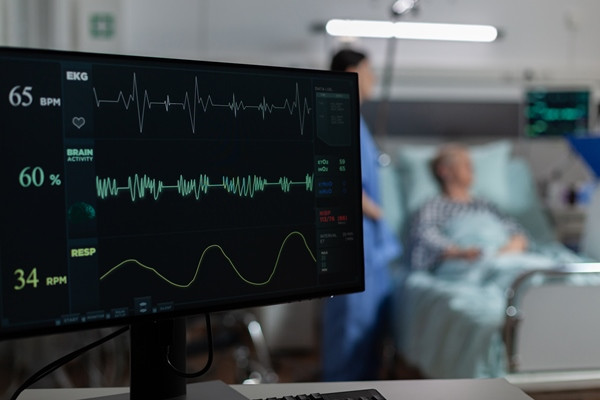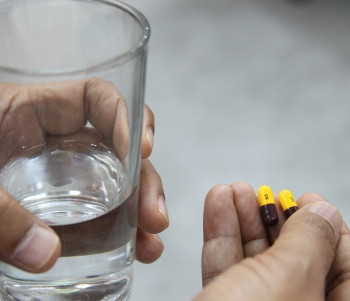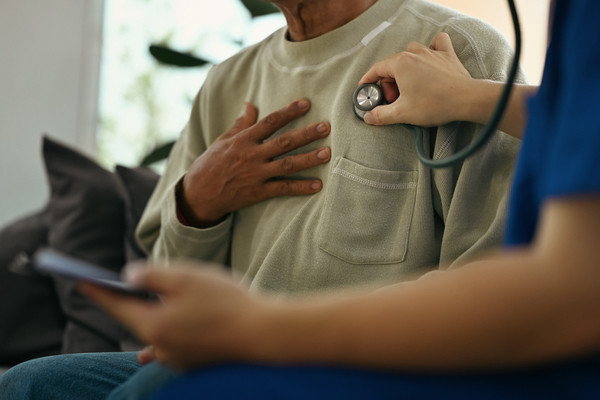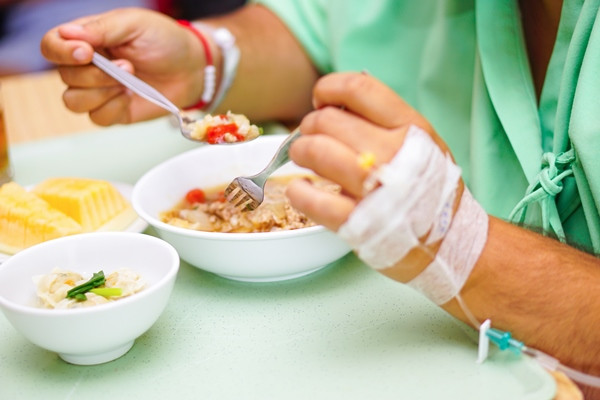Lupus Eritematous Sistemik (SLE)
Pendahuluan dan Fakta
Lupus eritematosus sistemik (SLE) adalah penyakit autoimun multisistem di mana organ, jaringan, dan sel mengalami kerusakan yang dimediasi oleh autoantibodi pengikat jaringan dan kompleks imun. Gambaran klinis SLE dapat berubah, baik dalam hal aktivitas penyakit maupun keterlibatan organ. Imunopatogenesis SLE kompleks dan sejalan dengan gejala klinis yang beragam. Tidak ada mekanisme aksi tunggal yang dapat menjelaskan seluruh kasus, dan kejadian awal yang memicunya masih belum diketahui.
Sesuai dengan teori, pada kasus ini juga terdapat penglibatan multisystem yaitu system mukokutan (malar rash), muskoloskeletan (arthritis), hematology (anemia), neurology (serebri) dan ginjal (nefritis)
Masih belum didapatkan data pasti mengenai prevalensi SLE di Indonesia. Di AS,angka yang paling dapat dipercaya adalah 0,05 – 0,1% dari populasi, namun didapatkan angka yang berbeda pada berbagai laporan. Beberapa ras, seperti kaum kulit hitam, keturunan asli Amerika, dan keturunan Hispanik, berisiko lebih tinggi terhadap SLE dan dapat mengalami penyakit yang lebih parah.
Patofisiologi
Patogenesis SLE terdiri dari tiga fase, yaitu fase inisiasi, fase propagasi, dan fase puncak (flares). Inisiasi lupus dimulai dari kejadian yang menginisiasi kematian sel secara apoptosis dalam konteks proimun. Kejadian ini disebabkan oleh berbagai agen yang sebenarnya merupakan pajanan yang cukup sering ditemukan pada manusia, namun dapat menginisiasi penyakit karena kerentanan yang dimiliki oleh pasien SLE. Fase profagase ditandai dengan aktivitas autoantibodi dalam menyebabkan cedera jaringan. Autoantibodi pada lupus dapat menyebabkan cedera jaringan dengan cara (1) pembentukan dan generasi kompleks imun, (2) berikatan dengan molekul ekstrasel pada organ target dan mengaktivasi fungsi efektor inflamasi di tempat tersebut, dan (3) secara langsung menginduksi kematian sel dengan ligasi molekul permukaan atau penetrasi ke sel hidup. Fase puncak merefleksikan memori imunologis, muncul sebagai respon untuk melawan sistem imun dengan antigen yang pertama muncul. Apoptosis tidak hanya terjadi selama pembentukan dan homeostatis sel namun juga pada berbagai penyakit, termasuk SLE. Jadi, berbagai stimulus dapat memprovokasi puncak penyakit.
Gejala Klinis dan Komplikasi
Gambaran klinis SLE sangat bervariasi, baik dalam keterlibatan organ pada suatu waktu maupun keparahan manifestasi penyakit pada organ tersebut. Sebagai tambahan, perjalanan penyakit berbeda antarpasien. Keparahan dapat bervariasi dari ringan ke sedang hingga parah atau bahkan membahayakan hidup. Karena perbedaan multisistem dari manifestasi klinisnya, lupus telah menggantikan sifilis sebagai great imitator.
Gambaran klinis SLE menjadi rumit karena dua hal. Pertama, walaupun SLE dapat menyebabkan berbagai gejala dan tanda, tidak semua gejala dan tanda pada pasien dengan SLE disebabkan oleh penyakit tersebut. Banyak penyakit, khususnya penyakit infeksi virus, dapat menyerupai SLE. Kedua, efek samping pengobatan, khususnya penggunaan glukokortikoid jangka panjang, harus dibedakan dengan gejala dan tanda SLE
Manifestasi Konstitusional. Demam muncul pada sebagian besar pasien dengan SLE aktif, namun penyebab infeksius tetap harus dipikirkan, terutama pada pasien dengan terapi imunosupresi. Penurunan berat badan dapat timbul awal penyakit, di mana peningkatan berat badan, khususnya pada pasien yang diterapi dengan glukokortikoid, dapat menjadi lebih jelas pada tahap selanjutnya. Kelelahan dan malaise merupakan salah satu gejala yang paling umum dan seringkali merupakan gejala yang memperberat penyakit. Penyebab pasti gejala-gejala ini masih belum jelas. Aktivitas penyakit, efek samping pengobatan, gangguan neuroendokrinologis, dan faktor psikogenik terlibat dalam timbulnya gejala konstitusional.
Manifestasi Mukokutan. Fotosensitivitas dapat dikenali dengan pembentukan ruam, eksaserbasi ruam yang telah ada sebelumnya, reaksi terhadap sinar matahari yang berlebihan (exagerrated sunburn), atau gejala seperti gatal atau parestesis setelah terpajan sinar matahari atausumber cahaya buatan. Fotosensitivitas sering ditemukan dan dapat terjadi pada semua kelompok ras dan etnis, walaupun belum ada studi mengenai prevalensinya dipopulasi umum. Ruam berbentuk kupu-kupu yang khas, yaitu ruam kemerahan di area malar pipi dan persambungan hidung yang membagi lipatan nasolabial, lebih dikenal sebagai malar rash atau butterfly rash. Ruam ini dapat ditemukan pada 20-25% pasien.
Manifestasi Muskuloskeletal. Artritis SLE biasanya meradang dan muncul bersamaan dengan sinovitis dan nyeri, bersifat nonerosif dan nondeforming.
Manifestasi Kardiovaskular. Perikarditis merupakan gejala khas, dengan nyeri substernal posisional dan terkadang dapat ditemukan rub. Ekokardiografi dapat menunjukkan efusi, atau dalam kasus kronik penebalan dan fibrosis perikardium.
Manifestasi Paru. Pleurisy sering ditemukan pada SLE. Nyeri dada khas pleuritik, rub, dan efusi dengan bukti radiografi dapat ditemukan pada sebagian pasien, namun sebagian lain mungkin hanya berupa gejala tanpa temuan obyektif.
Manifestasi Ginjal. Nefritis lupus muncul pada sebagian pasien dengan SLE. Spektrum keterlibatan patologis dapat bervariasi dari proliferasi mesangial yang sama sekali tidak menimbulkan gejala sampai glomerulonefritis membranoproliferatif difus agresif yang menuju gagal ginjal.
Manifestasi Neurologis dan Psikiatrik. Keterlibatan sistem saraf pusat (SSP) terjadi pada 5-15% pasien dan terkadang merujuk pada SLE neuropsikiatrik atau serebritis lupus. Pasien dapat memiliki manifestasi obyektif seperti meningitis asepsis atau meningoensefalitis, kejang, khorea, ataksia, stroke, dan mielitis transversa.
Manifestasi Gastrointestinal. Gejala gastrointestinal nonspesifik, termasuk nyeri perut difus dan mual, khas untuk pasien SLE.
Manifestasi Hematologi. Splenomegali dan limfadenopati difus sering merupakan temuan yang sering namun nonspesifik pada SLE aktif. Anemia merupakan temuan khas, dapat disebabkan oleh hemolisis, dengan hasil tes Coombs positif, kadar haptoglobin rendah, dan kadar laktat dehidrogenase tinggi, atau dengan mielosupresi.
Manifestasi Mata. Eksudat dan infarks retina (badan sitoid) relatif jarang dan merupakan temuan nonspesifik. Konjungtivitis dan episkleritis terkadang dapat ditemukan pada penyakit aktif. dsb
Diagnosis
Lupus eritematosus sistemik biasanya dimulai dengan gejala dan tanda nonspesifik atau spesifik, namun dapat juga bermanifestasi pertama dengan memar, splenomegali, neuritis perifer, mioendokarditis dan endokarditis, pneumonitis interstisial, meningitis aseptik, atau tes Coombs positif. Keberadaan anemia (71%), leukopenia (56%), trombositopenia (11%), proteinuria, hematuria, piuria, azotemia, hipergammaglobulinemia, kompleks imun, krioglobulin, antibodi antifosfolipid, dan Biologic False-Positive Serologic Test for Syphilis juga membuat seseorang dicurigai SLE.
Tatalaksana dan Perawatan
Tidak ada pengobatan yang permanen untuk SLE. Tujuan dari terapi adalah mengurangi gejala dan melindungi organ dengan mengurangi peradangan dan atau tingkat aktifitas autoimun di tubuh.
Terapi Farmakologi. Penyakit yang ringan atau remitten bisa dibiarkan tanpa pengobatan. Bila diperlukan, NSAID dan anti malaria bisa digunakan. NSAID membantu mengurangi peradangan dan nyeri pada otot, sendi, dan jaringan lainnya. Contoh: NSAID adalah aspirin, ibuprofen, naproxen, dan sulindac. Pada beberapa keadaan tidak disarankan pemberian agen selektif COX-2 karena dapat meningkatkan resiko kardiovaskular.
Kortikosteroid lebih baik dari NSAID dalam mengatasi peradangan dan mengembalikan fungsi ketika penyakitnya aktif. Kortikosteroid lebih berguna terutama bila organ dalam juga terkena.
Hydroxychloroquine adalah obat anti malaria yang ditemukan efektif untuk pasien SLE dengan kelemahan, penyakit kulit dan sendi. Efek samping termasuk diare, tidak enak perut, dan perubahan pigmen mata.
Pengobatan immunosupresan digunakan pada pasien dengan manifestasi SLE berat dan kerusakan organ dalam. Contohnya adalah methotrexate, azathioprine, cyclophosphamide, chlorambucil dan cyclosporine. Semua immunosupresan menyebabkan jumlah sel darah menurun dan meningkatkan resiko terjadinya infeksi dan perdarahan
Terapi Non Farmakologi. Menghindari sinar matahari atau menutupinya dengan pakaian yang melindungi dari sinar matahari bisa efektif mencegah masalah yang disebabkan fotosensitif. Penurunan berat badan juga disarankan pada pasien yang obesitas dan kelebihan berat badan untuk mengurangi beberapa efek dari penyakit ini, khususnya ketika ada masalah dengan persendian.
Kerusakan ginjal stadium akhir akibat SLE membutuhkan dialisis atau transplantasi ginjal
Operasi pengangkatan spleen kadang kala dilakukan untuk meningkatkan jumlah platelet
Referensi:
Laporan Kasus. Systemic lupus erythematous (SLE). [Internet]. [Cited 28/8/2021]. Available from: http://erepo.unud.ac.id/id/eprint/14766/1/4b5af7f9d2503f55a347e689e5d7f2ab.pdf














